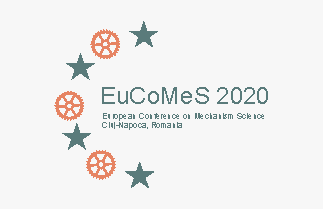Cluj-Napoca
is the third largest city in Romania, and the seat of Cluj County,
located in north-western Transylvania. Geographically, it is
roughly equally distant from Bucharest (323 km / 201 mi), Budapest
(354 km / 220 mi) and Belgrade (327 km / 203 mi). The city lies
in the valley of the Somesul Mic River and is the capital of
the historical province of Transylvania.
The city of Cluj-Napoca is an ancient cradle of Romanian culture
and civilization. It lies at the centre of the county, at the
crossroads of important national and international highways.
Cluj-Napoca is an important cultural, university and industrial
centre. It has brought outstanding contributions to Romanian
culture and science. Also it is an important centre of scientific
research and technologic development, 23 research institutes
and branches thereof currently operate in the city, having highly
qualified personnel.
The city of Cluj-Napoca is a remarkable cultural centre: it
has two drama theatres, two opera houses, two puppet theatres,
four culture houses, a philharmonic, six museums, among which
the National Museum of Transylvanian History which dates back
to the 19th century and one of the most beautiful Botanical
Garden from Europe.
Today there are sufficient conclusive proofs that allow one
to place the earliest signs of inhabitation of the region surrounding
Cluj-Napoca at least in the Middle Paleolithic period. Moreover,
many Neolithic, Iron Age, and Roman remnants have been found
in Cluj-Napoca and Gilau. Populations settled here and formed
comunities taking advantage of the water resource and surrounding
hills that offered protection.
The first written mention of its name – as a Royal Borough
– was in 1213 under the Latin name Castrum Clus.

Cluj-Napoca by night
The
city spreads out from St. Michael's Church in Unirii Square,
built in the 14th century and named after the Archangel Michael,
the patron saint of Cluj-Napoca. The boundaries of the municipality
contain an area of 179.52 square kilometers (69.31 sq mi).
Cluj-Napoca has a continental climate, characterized by hot
dry summers and cold winters. The climate is influenced by the
city's proximity to the Apuseni Mountains, as well as by urbanization
As of July 2007, 310,243 inhabitants live within the city limits,
a slight decrease from the figure recorded at the 2002 census.
The Cluj-Napoca metropolitan area has a population of 352,646
people,
From the Middle Ages onwards, the city of Cluj has been a multicultural
city with a diverse cultural and religious life. According to
the 2002 Romanian census, just under 80% of the population of
the city are ethnic Romanians, with the second largest ethnic
group being the Hungarians, who make up 19% of the population.
The remainder is composed of Roma (1%), Germans (0.23%) and
Jews (0.06%)
.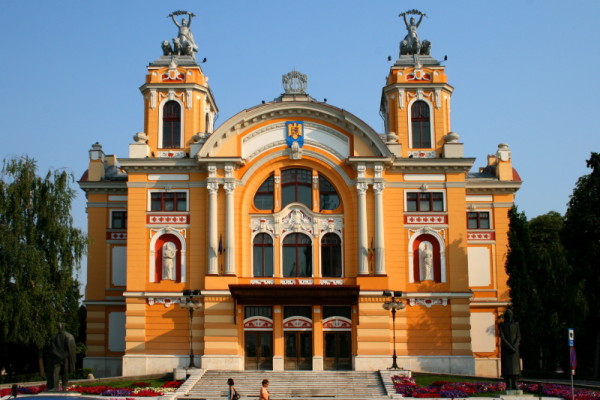
National
Theatre
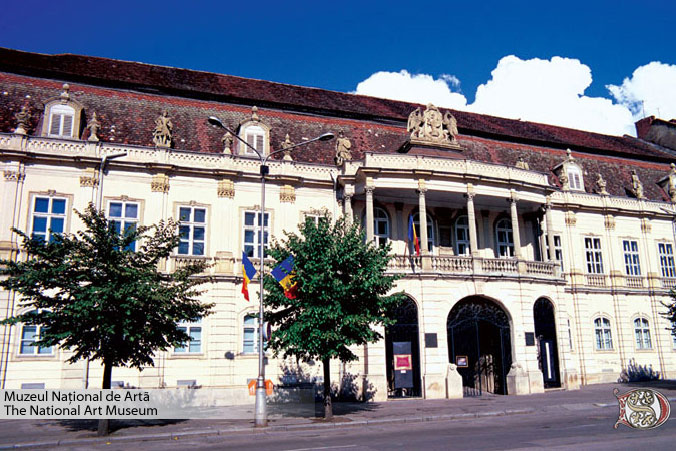
Art
Museum
The
city government is headed by a mayor. Decisions are approved
and discussed by the local council (consiliu local) made up
of 27 elected councilors. The city is divided into 15 districts
(cartiere) laid out radialy, some of them with their own local
administrative structure (town hall). City hall intends to develop
local administrative structures for most of the districts.
Today, the city is one of the most important academic, cultural,
industrial and business centers in Romania.
A wide variety of flora grow in the Cluj-Napoca Botanical Garden;
some animals have also found refuge there. The city has a number
of other parks, of which the largest is the Central Park. This
park was founded during the 19th century and includes an artificial
lake with an island, as well as the largest casino in the city,
Chios. Other notable parks in the city are the Iuliu Hatieganu
Park of the Babes-Bolyai University, which features some sport
facilities, the Hasdeu Park, within the eponymous student housing
district, the high-elevation Cetatuia, and the Opera Park, behind
the building of the Romanian Opera.
MAIN LANDMARKS
Avram Iancu Square (named after the Transylvanian Romanian lawyer
and revolutionary Avram Iancu) is a central plaza in the Romanian
city of Cluj-Napoca. It is connected to the Unirii Square through
the Eroilor and "21 Decembrie 1989" avenues. It is
also connected to Mihai Viteazul Square through Cuza Voda Street.
Its most prominent building is the Dormition of the Theotokos
Cathedral, although the plaza also houses the Wagner Gyula's
eclectic Palace of Justice, the Lucian Blaga National Theatre
and the headquarters of the County Prefecture.
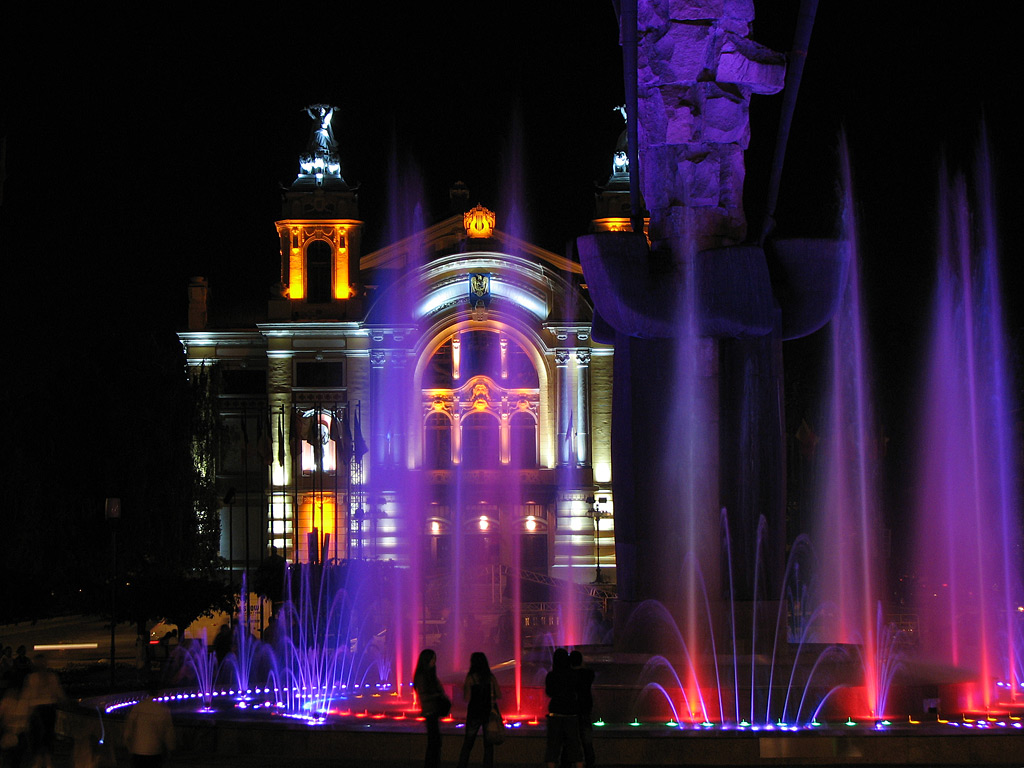
Avram
Iancu Square
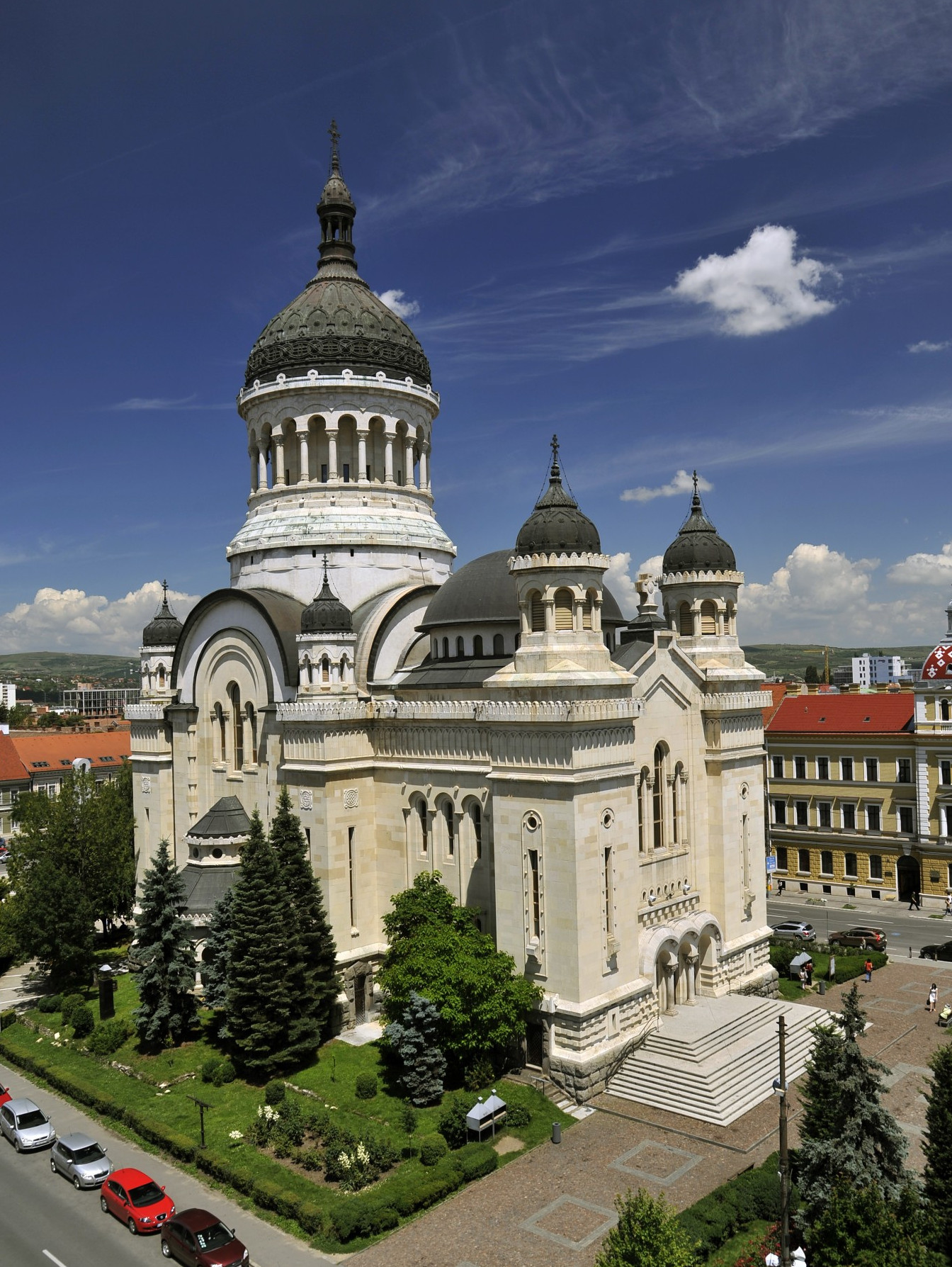
Ortodox
Cathedral
The
Dormition of the Theotokos Cathedral (Romanian: Catedrala Adormirea
Maicii Domnului) is the most famous Eastern Orthodox church
of Cluj-Napoca, Romania. Built in a Romanian Brâncovenesc
style, a synthesis of Renaissance and Byzantine architecture,
it lies on the Avram Iancu Square, together with the Cluj-Napoca
National Theatre and the Avram Iancu Statue.
The Cathedral is the seat of the Metropolitan of Cluj, Alba,
Crisana and Maramures. It is dedicated to the Dormition of the
Theotokos
The Palace of Justice in Cluj-Napoca, on Dorobantilor Street,
no.2, is an eclectic structure, built between 1898 and 1902,
after the plans of the association Epitotarsasag, Kotsis, Smiel,
Fodor es Reisinger. The building was projected by the architect
Gyula Wagner.
The quadrilateral building, with its 13 inner yards is a part
of the ensemble in Avram Iancu Square, together with the Romanian
Opera, the CFR Palace, the Palace of the Prefecture, the Palace
of Finance and the Palace of the Orthodox Metropolis.
The Lucian Blaga National Theatre (Romanian: Teatrul National
Lucian Blaga) in Cluj-Napoca, Romania is one of the most prestigious
theatrical institutions in Romania. The theatre shares the same
building with the Romanian Opera.
The Cluj-Napoca Tailors' Tower is located at the southeast corner
of the old Cluj-Napoca citadel. It was built in the 15th century
and rebuilt between 1627 and 1629, assuming its present form.
It was named after the Tailors' Guild, who took care of and
guarded this part of the city. Near the tower — where
Baba Novac, general of Michael the Brave and Saski priest, was
killed in 1601 by General Basta — there is a statue of
Baba Novac.
Wolfstreet Reformed Church erected with the support from king
Mathias Corvinus in the second half of the 15th century for
the Franciscan monks. It is one of the most massive gothic structures
in Transylvania, housing some unique and old wooden furniture,
the amvon, the 1766 rococo orga, and a set of coat of arms belonging
to important medieval families
Unirii Square (Romanian for Union Square) is the largest plaza
in the Romanian city of Cluj-Napoca. The centre of the city
spreads out from this square. The St. Michael's Church, with
the largest church tower in Romania, is located in this plaza.
The Church of Saint Michael is a Gothic-style Roman Catholic
church in Cluj-Napoca. It is the second largest church (after
the Black Church of Brasov) in Transylvania, Romania. The nave
is 50 meters long and 24 meters wide, the apse is 20×10
m. The tower with its height of 76 meter (80 meter including
the cross) is the highest one in Transylvania.
Matthias Corvinus statue
Bánffy Castle is a baroque building of the 18th century
in Cluj-Napoca, designed by the German architect Johann Eberhard
Blaumann. Built between 1774 and 1775 it is considered the most
representative for the baroque style of Transylvania.
The Matthias Corvinus House is one of the oldest buildings in
Cluj-Napoca, Romania. It was built in the 15th century as a
small guesthouse. During its history, the house served as a
jail, hospital, and museum; it is now home to a visual arts
institute.
Michael the Brave square and statue keep the memory of the courageous
Romanian captain who united for the first time the 3 provinces:
Moldavia, Vallachia and Transylvania, in 1601. The square itself
is the 3rd major concentration ( along with Avram Iancu sq.
and Unirii sq.) that contribute to what is considered to be
today the city centre.
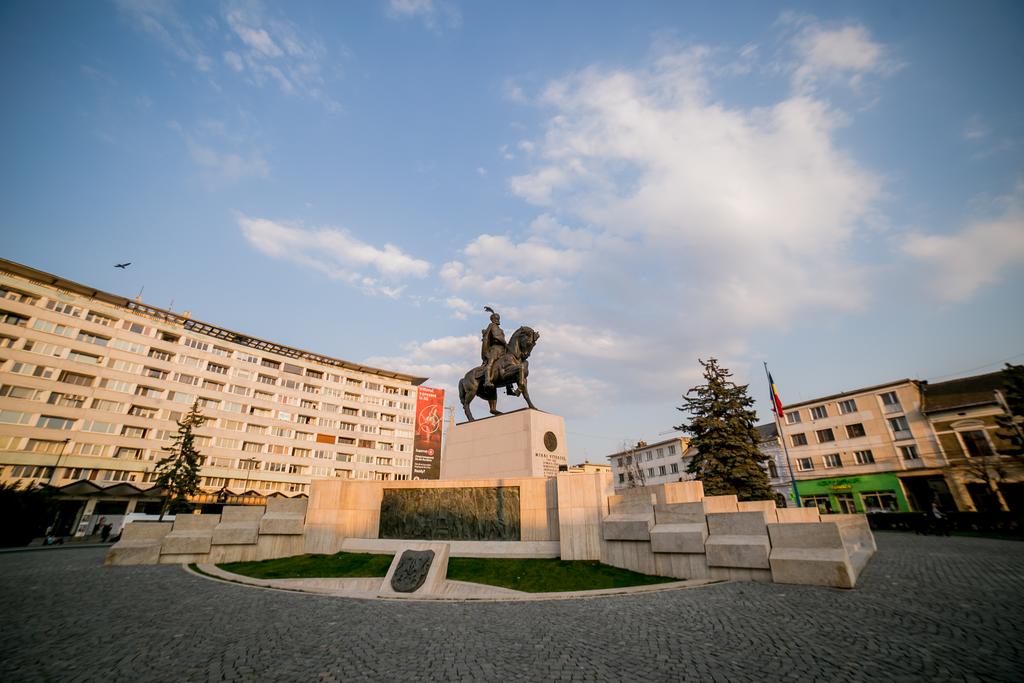
Michael the Brave Square
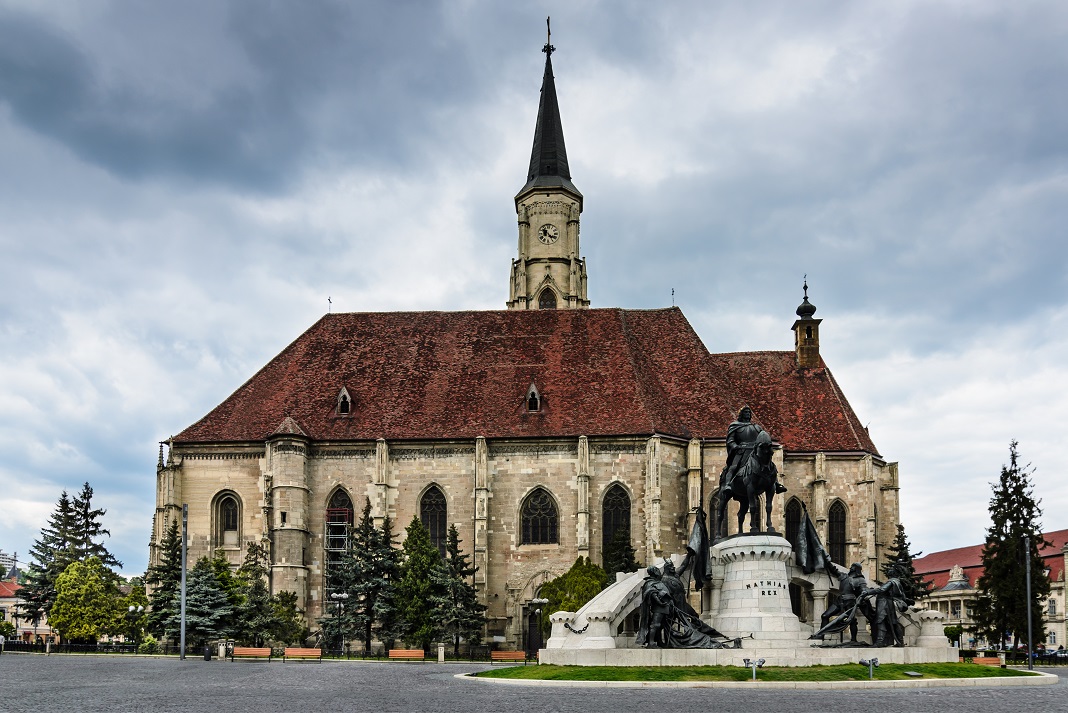
St.
Michael Church
The
Technical University of Cluj-Napoca is one of the eight higher
education institutions in Cluj-Napoca, the second in size, according
to the number of students it has. Its main activity lies in
educating and training engineers and technical staff. The university
was established in 1948 and was accredited by The National Council
of Academic Evaluation and Accreditation. The university has
nine faculties in its structure, where more than 600 academic
staff and more than 12,000 students carry out their activity.
The choice of courses in various engineering specialties ranges
from mechanical and manufacturing engineering to electrical
engineering, telecommunications, computer science and control
engineering, from civil engineering to architecture and materials
science. The specific equipment for teaching and research purposes,
the training and research laboratories, the modern computer
networks and libraries with many volumes constitute the support
of the educational and scientific activities.
The university staff and management aim at developing their
activity according to the European standards in the field, by
continuously improving and updating curricula, by implementing
distance learning, by using up-to-date methods and by restructuring
the educational process.
The research fields of interest cover mainly engineering and
technical topics and inter- or pluri-disciplinary ones as well.
Dynamic in character and action, The Technical University of
Cluj-Napoca has also committed itself to the international spirit
of our time. By means of the permanent involvement in European
programmes with various international, European, regional or
local partners, our university stands among those academic institutions
that are able to attract the interest of the academic community
and to integrate in joint activities.

